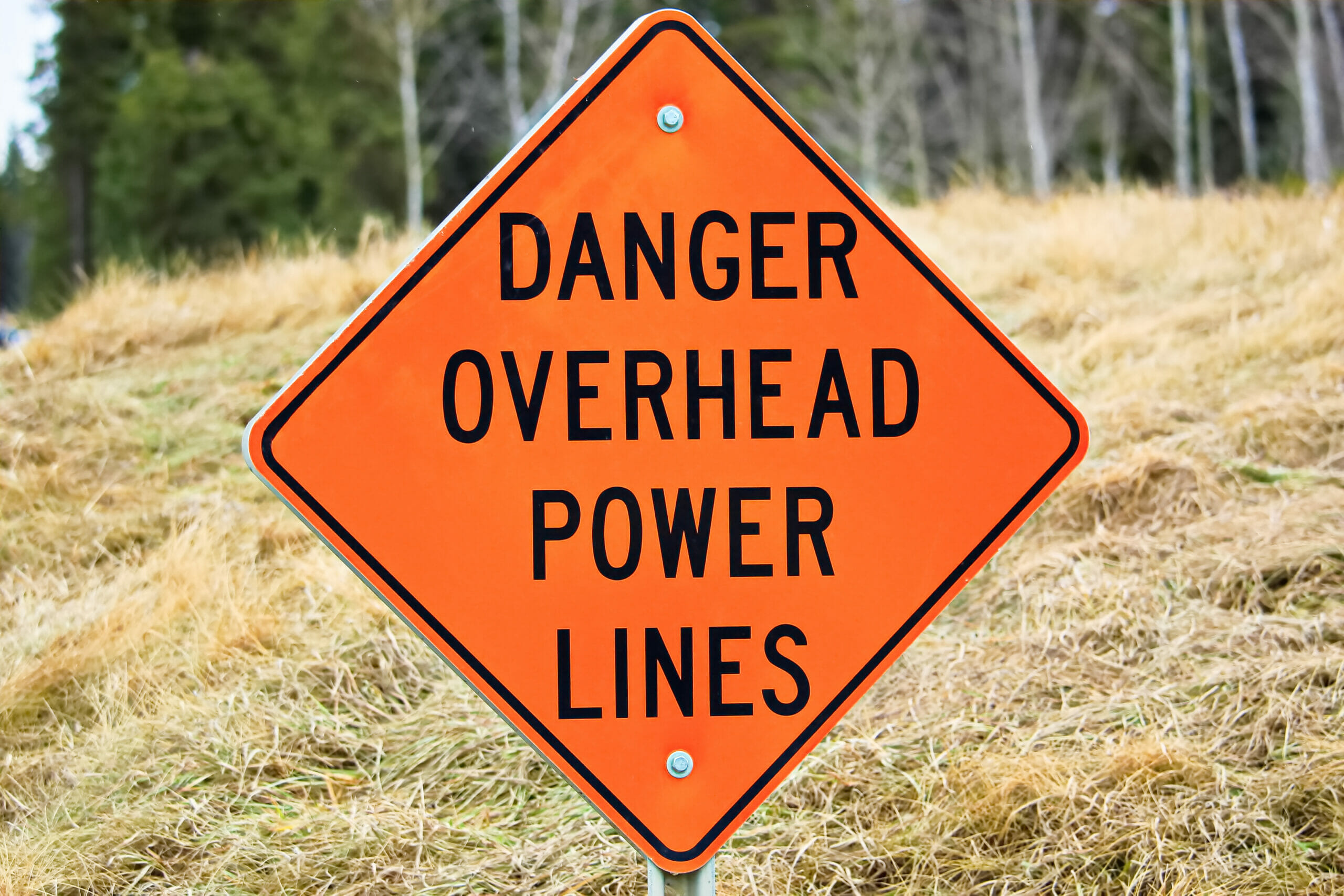Overhead Power Line Safety
New Braunfels, TX, March 29, 2023

Too many incidents occur when a worker comes too close to an energized power line, causing severe injury and disability or loss of life. This is more common than we would like to admit. Studies have shown that between 2011 and 2020, 39% of all electrically related fatalities were caused by overhead power lines. A heightened awareness is necessary when working around overhead powerlines. We wanted to take a moment and discuss three key points that could help prevent an incident.
KNOW THE VOLTAGE
Often times, there are scenarios where we work in and around overhead power lines. Whether it is working around them with a lift or crane, or below them doing groundwork, it is important to understand not only the scope of work and where you will be working, but also the voltage that are running within the power lines. If you don’t know, it is imperative that you stop work until you have identified it. An easy way of knowing for sure, is by searching for a voltage tag or rating on the power pole or by contacting the utility provider and provide them with the pole ID. Sometimes they may simply be fiber lines, with no inherent risk. Other times, they may be energized. Regardless of what they are, it is important to double check and maintain your distance.
KNOW THE MINIMUM APPROACH DISTANCE (MAD)
The minimum approach distance chart can be referenced in 29 CFR 1910.268 for Telecommunications. For the sake of today’s call, we have included the table in the Safety Call reminder as well. Once you have successfully identified the voltage of the overhead power line, ensure that you do not encroach the minimum distance referenced in the chart. The best way to measure the distance is with the use of a laser range finder. Remember that at times, state or local regulations may have more stringent minimum approach distances. If you are performing work in a state where this is the case, understand that you must go with the stricter guidelines of the two. If you find that you are unable to perform the scope of work being asked within the proper distance, stop work, and call a Safety Hotline or your Manager for further instruction. Ontivity has a dedicated Safety Hotline as a resource for our crews in cases just like these. In these cases, alternative measures, such as blanketing the power lines, must be taken to protect the workers.
TEST BEFORE YOU TOUCH
At the Ontivity family of companies, it is rare that we would have the need to come into direct contact with an overhead power line to execute our work. However, if it is necessary, we must remember to test before we touch. This task should only be executed by an individual that is qualified to do so and with the use of approved equipment such as a hot stick and a high voltage meter designed for the purpose of testing overhead power lines.
If you would like more information on this topic or any other safety-related topic, please reach out to the Ontivity safety team at safety@ontivity.com, and we will get you taken care of.
